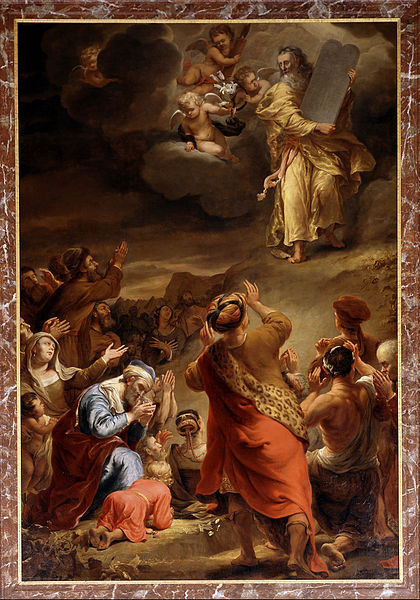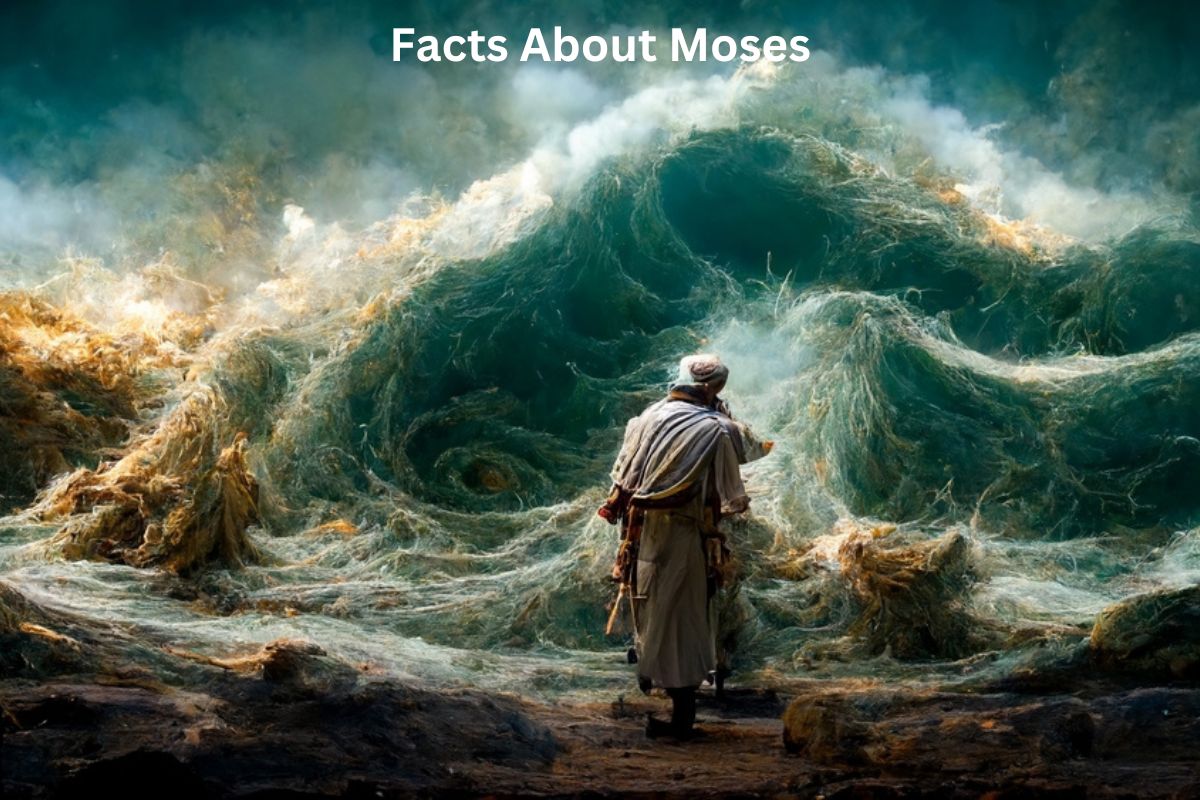Moses, a central figure in the religious traditions of Judaism, Christianity, and Islam, is known for his pivotal role in the liberation of the Israelites from Egyptian slavery and the reception of the Ten Commandments on Mount Sinai.
Born in Egypt during a time of oppression, he was raised in Pharaoh’s palace, where he would later be called by God through a burning bush to lead his people to freedom.
Moses’ life is characterized by a series of remarkable events, including the Ten Plagues in Egypt, the parting of the Red Sea, and 40 years of wandering in the wilderness. Despite his leadership, he tragically did not enter the Promised Land.
Moses’ legacy as a prophet, lawgiver, and symbol of faith continues to profoundly impact the beliefs and cultures of these major monotheistic religions.
Moses Facts
1. Born in Egypt during a time of slavery
Moses was born during a period when the Israelites were enslaved in Egypt. According to the Bible, this era of bondage began when a new Pharaoh came to power and feared the growing number of Israelites.
Also Read: Facts About the Book of Genesis
To control their population, he ordered the enslavement and harsh treatment of the Israelites, forcing them into hard labor. Moses was born into this oppressive environment.

2. Raised by Pharaoh’s daughter
Moses’ mother, Jochebed, faced the difficult decision of hiding her newborn son to save him from Pharaoh’s decree to kill all male Israelite infants. She placed him in a basket and set it adrift on the Nile River.
Also Read: The Ten Commandments Facts
Fortunately, Pharaoh’s daughter discovered the baby in the basket and decided to adopt him as her own, giving him the name Moses.
This turn of events was a remarkable stroke of fate, as Moses was raised in the royal palace of Egypt, receiving an education and privileges that most Israelites did not have.
3. Called by God through a burning bush
One of the most iconic moments in Moses’ life is his encounter with the burning bush on Mount Horeb, also known as Mount Sinai. According to the Bible, while Moses was tending to his father-in-law’s flock, he saw a bush that was burning but not consumed by the flames.
As he approached the bush, God spoke to him from it, instructing him to remove his sandals because he was standing on holy ground. God revealed His plan to use Moses as His messenger to lead the Israelites out of slavery in Egypt.
This divine calling marked the beginning of Moses’ role as a central figure in the liberation and guidance of the Israelites.
4. Led the Israelites out of Egypt
Moses’ central role in leading the Israelites out of Egypt is a pivotal event in his life. Following God’s command, Moses confronted Pharaoh, demanding the release of the Israelite slaves with the famous phrase, “Let my people go!”
Also Read: Timeline of Moses
When Pharaoh repeatedly refused, God brought a series of ten devastating plagues upon Egypt, including locusts, frogs, and the death of the firstborn. The final plague, the death of the firstborn, led Pharaoh to relent and release the Israelites.

5. Brought about the Ten Plagues in Egypt
The Ten Plagues of Egypt are a well-known part of the biblical narrative. These plagues were sent by God through Moses as a way to demonstrate His power and to persuade Pharaoh to let the Israelites go.
Each plague targeted a different aspect of Egyptian life and was a divine sign of God’s authority. The plagues culminated with the Passover, during which the Israelites marked their doorposts with lamb’s blood to protect their firstborn sons from death.
The tenth plague, the death of the firstborn, was the final straw for Pharaoh, leading to the Israelites’ liberation.
6. Parted the Red Sea for the Israelites’ escape
After leaving Egypt, the Israelites found themselves pursued by Pharaoh’s army. They were trapped between the Red Sea and the Egyptian forces.
In a miraculous event, Moses raised his staff, and by God’s power, the waters of the Red Sea parted, creating a dry path through the sea.
The Israelites crossed to safety on the other side, but when Pharaoh’s army pursued, the waters closed in, drowning the Egyptian soldiers.
This dramatic event solidified Moses’ role as a powerful leader and delivered the Israelites from the immediate threat of recapture.

7. Received the Ten Commandments on Mount Sinai
Moses is traditionally believed to have received the Ten Commandments directly from God on Mount Sinai (also known as Mount Horeb) during the Israelites’ journey through the wilderness.
The Ten Commandments are a foundational set of moral and ethical principles that include instructions such as “You shall not murder,” “You shall not steal,” and “Honor your father and mother.”
These commandments became the cornerstone of the Mosaic Law and are revered in Judaism, Christianity, and Islam as a guide for living a righteous life.
8. Wandered in the wilderness for 40 years
After the Israelites’ escape from Egypt, they spent 40 years wandering in the wilderness. During this time, Moses provided leadership and guidance to the people. The wilderness journey was a period of testing, purification, and learning for the Israelites.
They received various laws and instructions from God, often through Moses, to help them live in accordance with God’s will. It was also a time of reliance on God for daily sustenance, as they were provided with manna and quail for food and water from miraculous sources.
9. Died on Mount Nebo, not entering the Promised Land
One of the most poignant moments in Moses’ life is his inability to enter the Promised Land. According to the Bible, due to an act of disobedience when he struck a rock to bring forth water instead of speaking to it as God had commanded, Moses was barred from entering Canaan, the Promised Land.
As the Israelites neared their destination, Moses ascended Mount Nebo, where he was able to see the land from a distance but never set foot in it. He died on the mountain, and God buried him in an undisclosed location.
10. Influential figure in Judaism, Christianity, and Islam
Moses is an immensely influential figure in the Abrahamic religions of Judaism, Christianity, and Islam. In Judaism, he is regarded as one of the greatest prophets, the liberator of the Israelites, and the giver of the Torah (the first five books of the Hebrew Bible).
In Christianity, Moses is often seen as a precursor to Jesus Christ and a central figure in the Old Testament. In Islam, he is known as Musa and is considered a prophet who received revelations from God.
The story of Moses and his role in leading the Israelites out of Egypt is a unifying narrative across these faiths and has had a profound impact on their beliefs, laws, and cultural traditions.
